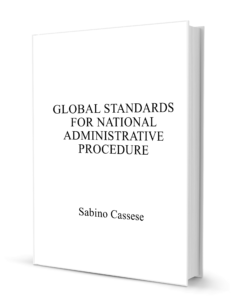
Sabino Cassese
Read PDFRead PDFAfter a preliminary discussion of administrative law as state law, this article identifies the global regulatory regime characterized by permanent rules and briefly describes the characteristics common to different instruments in this system. It then turns to the peculiarities of this global regime, organizing them into four categories: the regulators, the regulated, the regulatory process, and the legal status of the rules. Three aspects respecting the regulators are analyzed: (1) regulation set forth by international treaties and regulation set forth by secondary regulators, like the committees of international organizations; (2) the schism between the authors of the regulation and the authorities overseeing national compliance with it; and (3) the disintegration of the states produced by singling out national authorities that act as partners with the international authorities. As for the regulated, this article considers the regulations’ “vertical” effect between international organizations and states and their “horizontal” effect between the states themselves, as well as other relationships between states and interested parties established by the international legal order. In the discussion of the regulatory process, itself, this article examines the peculiarity of voluntary, self-imposed mutual recognition and the characteristics of the notice and comment procedure as applied to interstate relations and to the relations between states and private parties. Finally, in considering the legal status of these international administrative measures, this article examines both their non-binding character and the source of their effectiveness.


